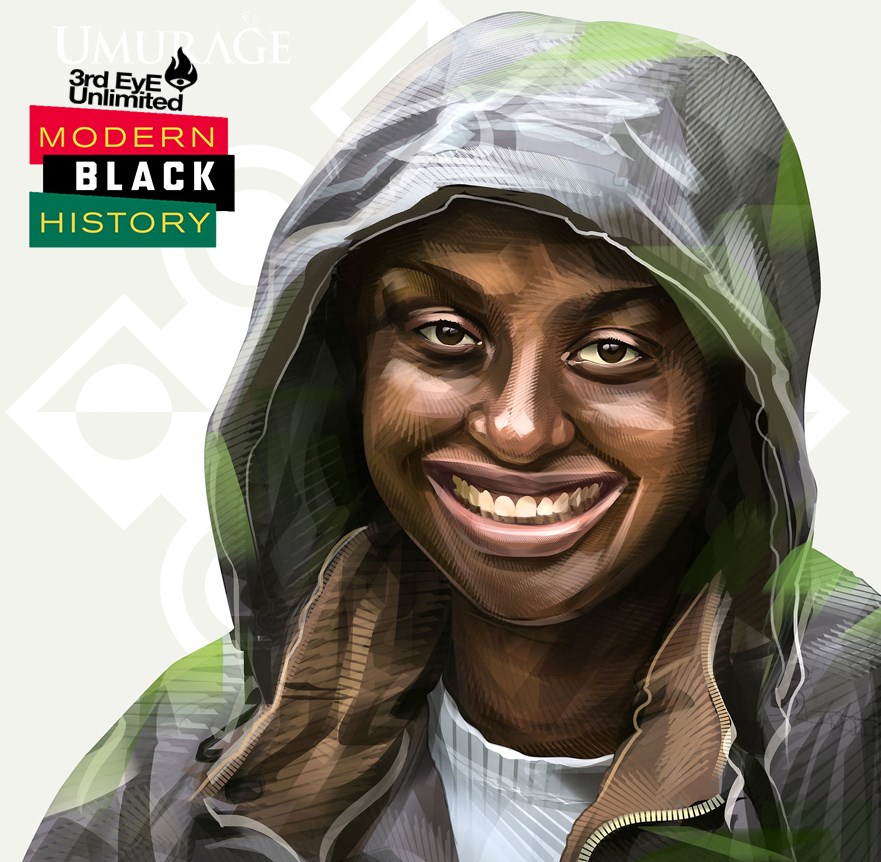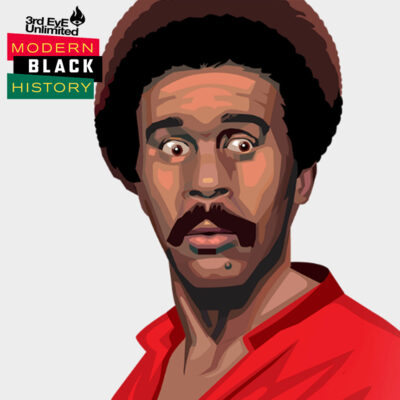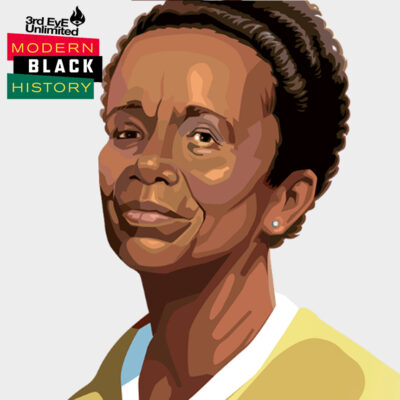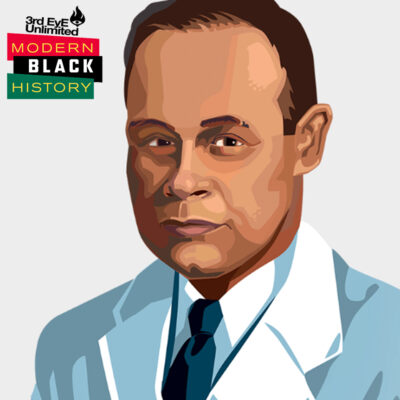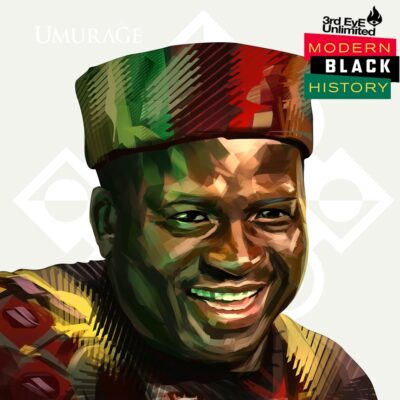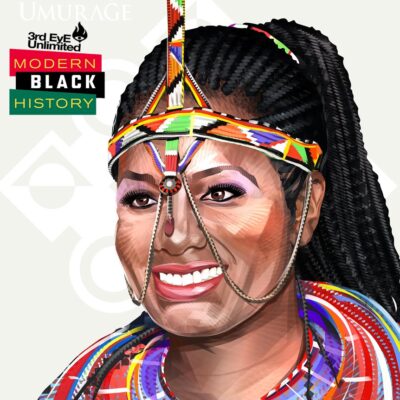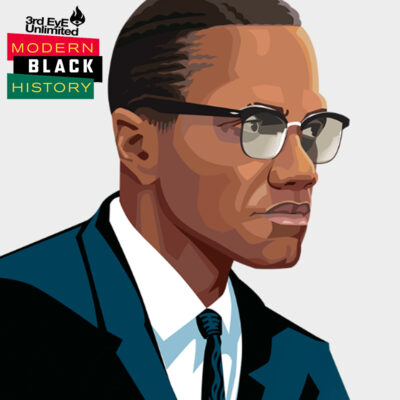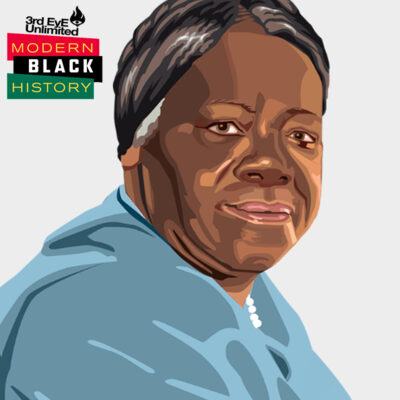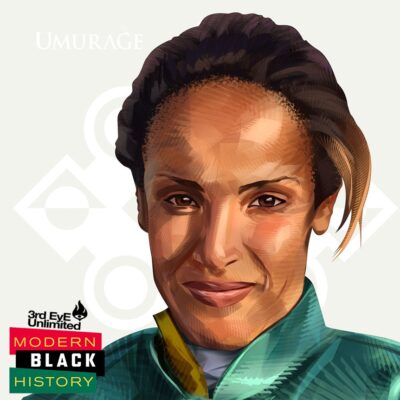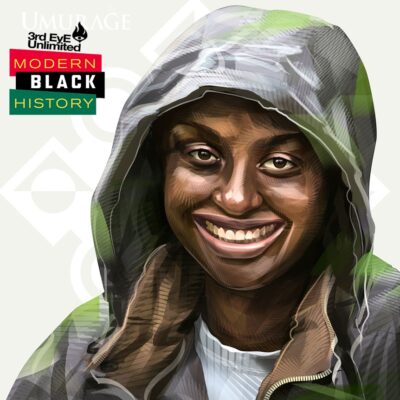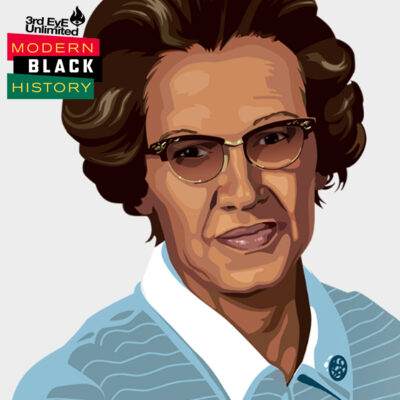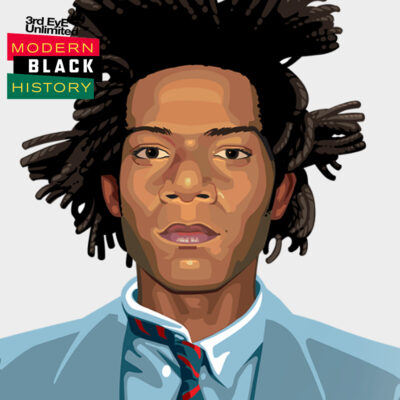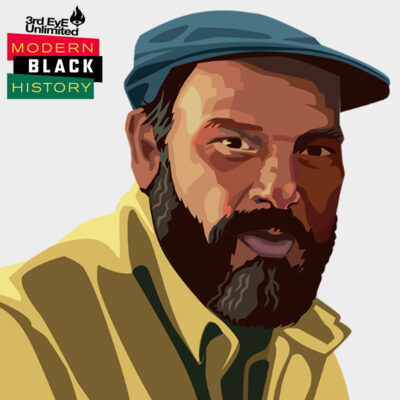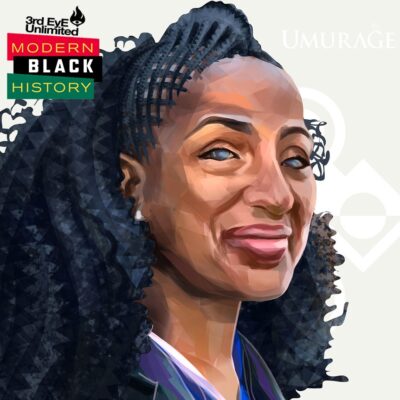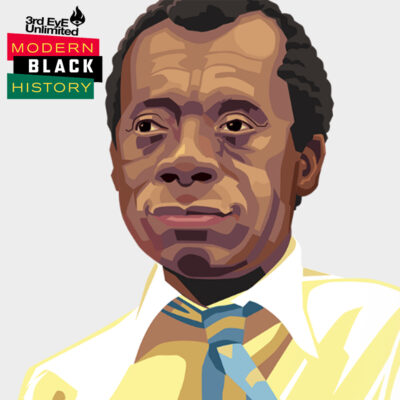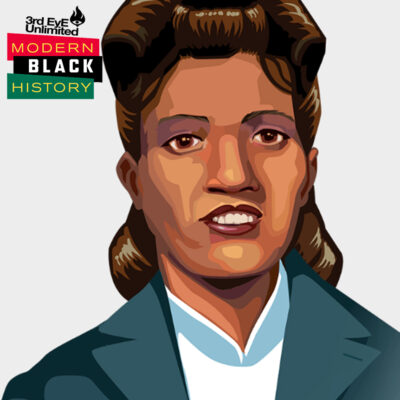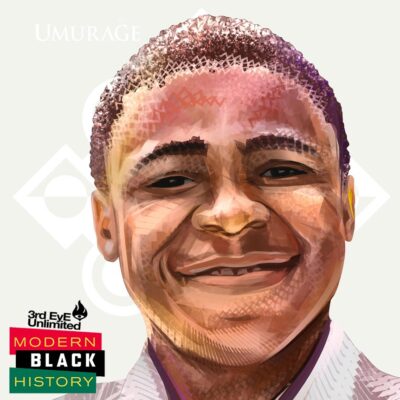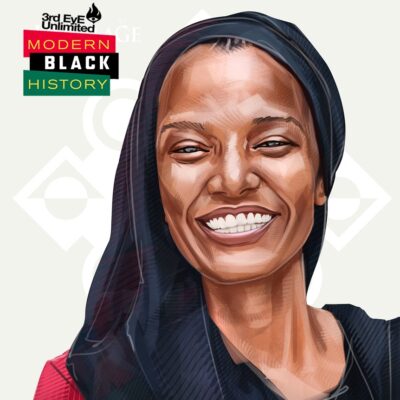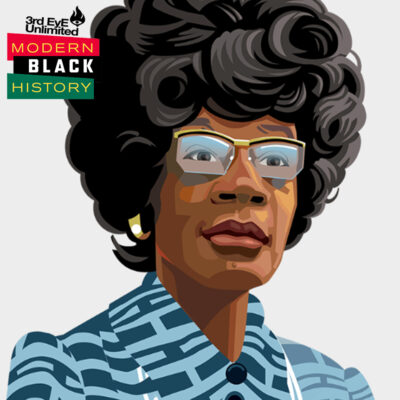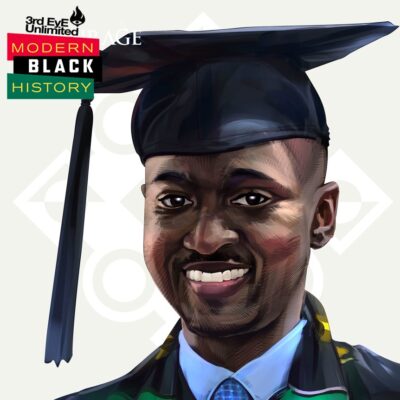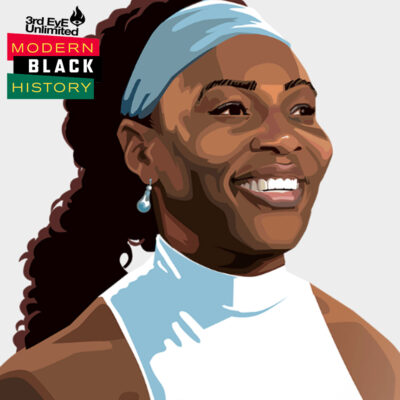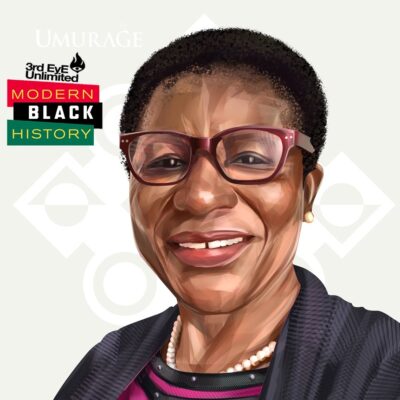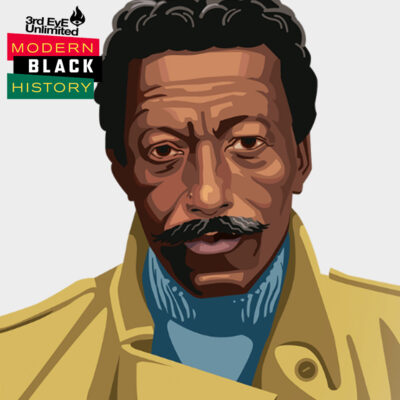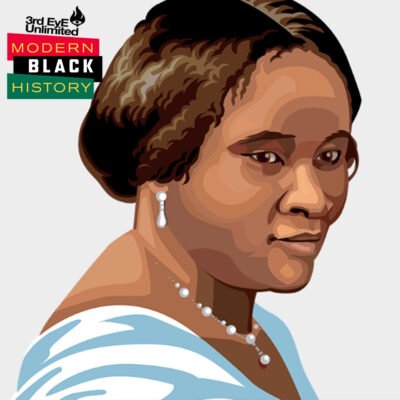Who will protect endangered species from us, if not ourselves?
Imagine you were born in Uganda. Imagine that, as a little girl, you dreamed of taking care of animals “when you grow up”. Imagine you were able to pursue an education in the field of your dreams. Imagine that, through your studies and field work, you discover something that never occurred to you before: that human diseases are responsible for some of the deaths in the wildlife population. Imagine you want to join the wildlife protection services, but they tell you there is no position matching your profile. Where else would you go? Or would you abandon your dream of working in conservation and go to find a job in more classical animal health services, like all your other colleagues?
Today, I am inspired by Gladys Kalema-Zikusoka , born in Kampala, the capital of Uganda, in 1970.
Her early life was marked by a tragedy. In January 1972, her father, William Wilberforce Kalema was yanked from his car and taken away by unknown assailants and he was never found again. Idi Amin Dada had just taken power and there is little doubt today that William Kalema – a former teacher turned politician and public servant in the 1960’s – was assassinated by the new regime. He was unfortunately one of many prominent politicians and citizens alike who suffered this tragic fate during the notorious General Amin Dada’s eight years rule.
Gladys young mother, Rhoda Kalema, was left to raise the couple’s six children on her own. History had repeated itself in the most gruesome manner for Rhoda. The country had already taken a loved one away from her. It was in 1945, she was 16. Her father, Owekitiibwa Martin Luther Nsibirwa, a former prime minister of the Buganda Kingdom – Uganda’s largest subnational kingdom – was shot in public, in front of his hometown Cathedral, as he was about to enter the church for morning mass. The irony was that he was killed by people who opposed his plans to allocate land to expand Makere, the country’s first university.
It was devastating for the teenager, but she found the strength to carry and pursue her education the way her father had dreamed for her. After graduating from High School, Rhoda went to study Social Work in Edinburgh, the capital of Scotland. Upon her return home, she worked as an administrator at her former High School while taking an active part in the local politics, another way to uphold her father’s legacy. It was in those days she met her future husband and followed him in Kampala. They gave birth to their six children, three girls and three boys, in the Ugandan capital.
Their children were still very young when their father was murdered- Gladys, the couple’s youngest child was just two years old – when the tragedy occurred and their mother tried her best to raise them alone, which was not easy. In those days, many other family friends disappeared the same way her husband did, which added to their family’s trauma.
At the time of his death, William was working as a director in a company he co-founded and after his death the partners invited Rhoda to take over the position. With that job, she could have given her kids a decent life, but that proved to be impossible thanks to the harassment of and the unjustified arrests and detentions she was a victim of by the state security services. In 1979, she had no other choice but to flee the country, after the third arrest, fearing that it could get worst and her kids would be left without any parent to take care of them.
Thank God, their exile in Nairobi, the capital of neighboring Kenya, was short-lived, as Idi Amin Dada was overthrown from power in April 1979. Rhoda decided to play a more active role in politics and was to later become one of the first women to serve in Uganda’s parliament.
As you can imagine, Gladys childhood was not an easy one. However, like her mother some decades earlier, young Gladys was able to rise above the family tragedies and applied herself in school, where she developed what was going to be her lifelong passion: wildlife.
Her love for the animals that lived in the natural parks of her country was so big, she started a wildlife club at her school when she was 12! She also organized trips for her classmates to Queen Elizabeth National Park, the magnificent 2000 square kilometres reserve created in 1952 and home to almost 100 mammal species – including buffaloes, hippopotamus, Nile crocodile, elephants, leopards, lions, and chimpanzee – and over 500 bird species.
When she finished high-school, the young lady had an amazing opportunity to turn her hobby into her profession when she won a scholarship to study at the University of London Royal Veterinary College, from which she graduated with a Bachelor of Veterinary Medicine before pursuing a Master of Veterinary Medicine in the US, at North Carolina State University.
During her studies, Gladys developed an interest for the mountain gorillla, one of the emblematic animals of the great lakes region. Her encounter with one of the primates made famous by Dian Fossey ‘Nyiramacibiri’ – the famous American researcher who spent most of her life studying Gorillas in Rwanda’s Volcanoes National Park – happened quite fortuitously in 1994. Gladys was a veterinary student at in London and had gone back home to do field research in Bwindi Impenetrable National Park.
The name ‘impenetrable’ gives you a good idea of one of the main features of the park: it is a very dense rainforest only accessible by foot. The park is in southwestern Uganda, bordering with DR Congo’s Virunga National Park of a total surface of 321 square kilometres. Bwindi became a National Park in 1991 and was declared a UNESCO Natural World Heritage Site in 1994. It is among the most diverse forests in East Africa, with more than 1,000 flowering plant species, including more than 150 species of trees and 100 species of ferns. It is home to 120 species of mammals, the most famous of them being the Bwindi gorillas – 400 of them, roughly half of the world’s population of this primate so genetically and behaviorally close to humankind.
Gladys trip to the famous park was a life changing experience. There, amid centuries old trees of the rainforest, the aspiring doctor was to come face to face with Kacupira, a silverback. Imagine the scene: a young student facing one of those animals that can easily weigh up to 195 kg! And that back covered with hair, an undisputable symbol of his age and his status!
“It was the first-time l saw Mountain Gorillas in the wild in Bwindi Impenetrable National Park. Kacupira was so calm and just watched us. Watching him on that day, I felt a real connection with him.”
Unfortunately, she never saw the gorilla again. Gladys was devastated when she learned a few days later that Kacupira’s family was wiped out by a contagious disease. All of them! And what made it worst, was that it was scabies, a human disease inadvertently transmitted to them by neighboring communities.
“That’s when we realized that gorillas can get infected with human diseases carried by the local communities whom they share their habitat with. Before that, we were more concerned about tourists infecting gorillas. Now another big threat was the local community.”
When she completed her studies, Dr Gladys was keen to go back home and work to protect her beloved wildlife. There was however one barrier, and it wasn’t a small one. The Wildlife Authority, an office attached to the Ministry of Tourism, did not have any Veterinarian position. In those days, no one really thought it was necessary. Conservation of the country’s wildlife consisted at letting them live in the wild without any human interference.
She couldn’t go to the Veterinary services to help her with that, as their mandate was strictly limited to the health of domestic animals. She couldn’t go to the Public Health Services either as they were managed separately from conservation programs and even in the wildlife-protected areas.
However, Dr Gladys did not let that obstacle stop her. If the job doesn’t exist, why not fight to create it? That’s exactly what she did. The young graduate wrote an impassionate letter to the Ugandan Wildlife Authority, laying out her research and explaining how critical it was to create a position for a veterinarian who would be best habilitated to tackle such issues.
I don’t know if she expected any answer from them or if was merely a way to vent. Yet, she did get an answer and not one you would expect: she was called to come and help open the Veterinary Department she had recommended. Just like that.
When she joined the UWA, she didn’t really have a whole department, it was just her and a desk but for Gladys, it was like she was given the keys of the city! At 25 years old, nonetheless! She later learnt that there used to be a veterinarian at the Wildlife office, but that was 36 years ago, during colonial times. Imagine that!
Building a department from scratch was no easy task for the doctor, but she was decided to succeed. Did I mention she oversaw 10 National Parks? In a country with limited resources to give to the sector. Plus, the wildlife resources were severally depleted during the country’s years of civil war, either killed to feed displaced populations or poached on behalf of unscrupulous foreign buyers.
Her first and most urgent task was therefore to recruit new rangers and veterinarians and train them.
“The biggest problem I faced, was building up the number of animals that have been killed off, and then once I’ve done that, I have to make sure they’re not eaten, shot or poached again.”
However, she knew deep down that it wasn’t enough to enforce more severe patrols of the parks and control for transmittable illnesses for the wildlife population to suddenly get back to the pre-war levels. The fastest solution would be to introduce new animals ‘imported’ from another country if she wanted to restore their numbers.
She started working out an arrangement with the closest country she could think of: Kenya.
And the most urgent species needing saving were the Giraffes. Giraffes were on the blink of disappearing in Uganda. At the time of Gladys birth, Uganda had reportedly around 400 giraffes in Kidepo Valley National Park. When Gladys started working at the Wildlife Authority there were only 6 left! 385 of these majestic long-neck animals dead in one quarter century!
“Kenya had too many giraffes – we only had six, so I called them up and asked if they wanted to give me some.”
She was able to convince them that it would be beneficial for both, as Kenya’s fast-growing population was putting a lot of pressure on the wildlife natural habitat.
There she was, flying to Kenya to bring the long-necked animals to their new home-country. A spectacular exercise of you’ve ever seen one.
Between March and April 1997, three giraffes were captured from Lake Nakuru National Park in Kenya and translocated to Kidepo Valley National Park in Uganda, which are some 800 kilometres apart! As Kidepo had only 1 female and 5 male giraffes, the translocation consisted of introducing females.
Gladys organized every step of the extraordinary translocating of wildlife from Kenya, and when the moment arrived, she escorted the animals herself with a team of rangers so the animals wouldn’t be poached during the trip.
It was a real success! The new animals integrated well in their new ecosystem and the population started increasing again. Today, Uganda has 35 giraffes in Kidepo Valley National Park!
However, it not time yet to celebrate as Ugandan giraffes are considered to be the most at risk among the 100,000 giraffes left in Africa.
After that successful translocation, Dr Gladys had her sights on another endangered species, the mountain gorillas, a species she could not get out of her mind since she first met one in 1994.
Though there were more Gorillas than Giraffes in Uganda, the situation of this endangered primate was more dire in many ways. First, their overall population worldwide was very small – in those days, there were less than 400 mountain gorillas left in the world. Secondly, their natural habitat – constituted of four national parks: Bwindi Impenetrable National Park and Mgahinga Gorilla National Park in Uganda, the Volcanoes National Park in Rwanda and the Virunga National Park in DRC – were all in the epicenter of the geographical triangle covering localities in the immediate vicinity of the southwest border of Uganda, eastern border of the Democratic Republic of Congo and northwest border of Rwanda – also known to recurrently be the theatre of the endemic transborder conflicts ravaging the Great Lakes regions for the last 30 years now.
In the year 2000, she left the Ugandan Wildlife Authority so she could better prepare herself to follow her passion to protect the endangered primate, a fight she wanted to conduct as a civil society agent rather than a government agent. But first, she went back to the US, at her alma mater, North Carolina State University and do more research on illnesses transmitted from humans to wildlife. While in the US, she completed a Masters in Specialized Veterinary Medicine at North Carolina State University and a Certificate in Non-Profit Management from Duke University.
In 2003, armed with her newly acquired degrees and her years of field work, Dr Gladys went ahead and co-founded the Conservation Through Public Health (CTPH), a grassroots NGO and non-profit that promotes coexistence of people, gorillas and other wildlife, with a focus on improving the health of both people and gorillas, and on lifting communities out of poverty. The NGO operates in Uganda in the Virunga National Park in the neighboring Democratic Republic of Congo.
She started by going around the communities neighboring the parks, sharing with them the results of her research and sensitizing them about the risk they pose to wildlife. But she realized it wasn’t enough. The communities in those areas were very poor, and she had to admit that that was the main reason they engaged in poaching.
So, she decided to find a way to address their income situation. In 2015, the conservationist surprised the world when she launched the Gorilla Conservation Coffee, a social enterprise run by a cooperative – the Bwindi Coffee Growers Co-Operative. Yet the model makes sense and it is a simple one: the enterprise trains the famers to help them grow higher quality coffee beans in a sustainable manner, buys their coffee at a premium, processes it and sells it as a branded roasted coffee.
“Gorilla Conservation Coffee came about when we realized that coffee farmers around Bwindi Impenetrable National Park, home to the endangered mountain gorillas, were not getting a fair price for their coffee, leading them to depend on the gorillas’ habitat to meet their basic needs to feed their families. Supporting the coffee farmers fitted within CTPH’s three integrated programs: wildlife health and conservation, community health and alternative livelihoods.”
All the coffee produced by the cooperative is premium Arabica, it is selectively handpicked and washed and dried under shade, which increases its market value.
The first blend was named after Kanyonyi, a renown silverback from Bwindi Impenetrable National Park. Most of the proceeds go to the producers; CTPH receives a small donation for its conservation programs.
Gorilla Conservation Coffee is the first coffee of this nature in Ugandan, if not in the world and conservationists and coffee lovers in the world were immediately seduced by this innovative brand that allied fair trade to the protection of an endangered species!
What started as a niche product only sold in Uganda is now sold in over 17 countries around the world.
Dr Gladys is recognised today as one of the most prominent conservationists on the continent. Her work is credited to have brought about a better understanding of a different type of risk man poses to wildlife apart from poaching. Thanks to her work, the issues of transmission of illnesses from human are as front and centre as issues relating to illnesses said to be transmitted by wildlife mankind.
Dr Gladys’ work has earned her several awards and accolades. In 2006, the Ugandan scientist and mother of two young kids was elected to an Ashoka Fellowship and in 2007, Seed Magazine named her one of their eight Revolutionary Minds in Science. In 2009, she won the Whitley Gold Award, often called the “Green Oscars”. More recently, in 2018, Dr. Gladys was awarded the Earth Care Award by the United States-based Sierra Club, in recognition of her “unique contribution to international environmental protection and conservation”. In January this year, Gorilla Conservation Coffee, was awarded with a top ranking in the prestigious Coffee Review Top 30 Coffees list in the USA.
Dr Gladys work on behalf of the mountain gorillas was featured in the BBC documentary ‘Gladys the African Vet.’ and in several documentaries in National Geographic, Animal Planet, South-Africa’s MNet and Uganda Television documentaries.
Last year, Dr Gladys was invited to become a National Geographic Explorer. You’ve probably seen one of those documentaries on TV? Each monthly episode takes a deep dive inside a story from the pages of a recent National Geographic issue – the famous magazine with a yellow cover and amazing photography – taking viewers to the most remote corners of the globe.
Next step in her journey? To expend the Gorilla Coffee initiative in other communities around Bwindi Impenetrable National Park and other protected areas in Africa.
To think that all this was set in motion by a dream she had when she was just 12 years old!
Ok, enough writing for today. This article made me want to go and get me some good Gorilla Conservation Coffee. Not you?
Right Your Legacy Dr Gladys!! Thank you for all your efforts to preserve Africa’s most fragile and precious beings, next to mankind.
Contributor -Um’Khonde Patrick Habamenshi

